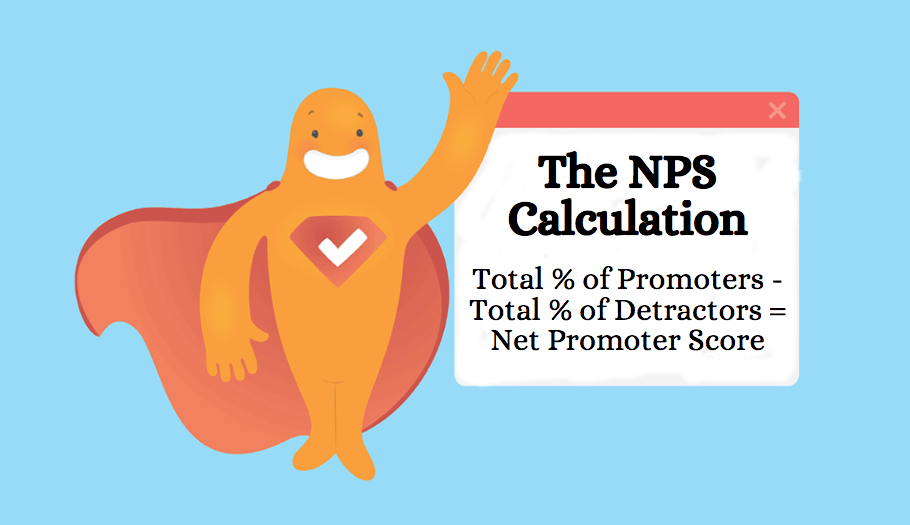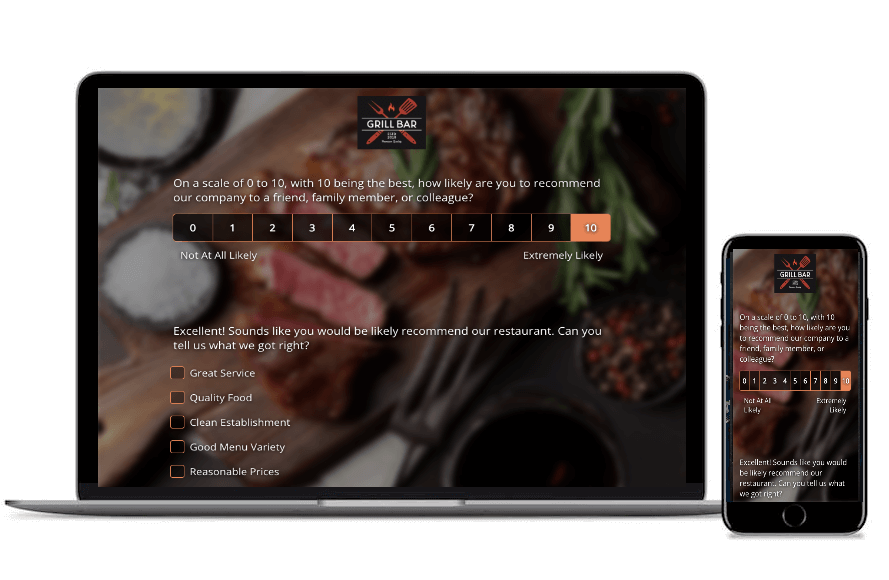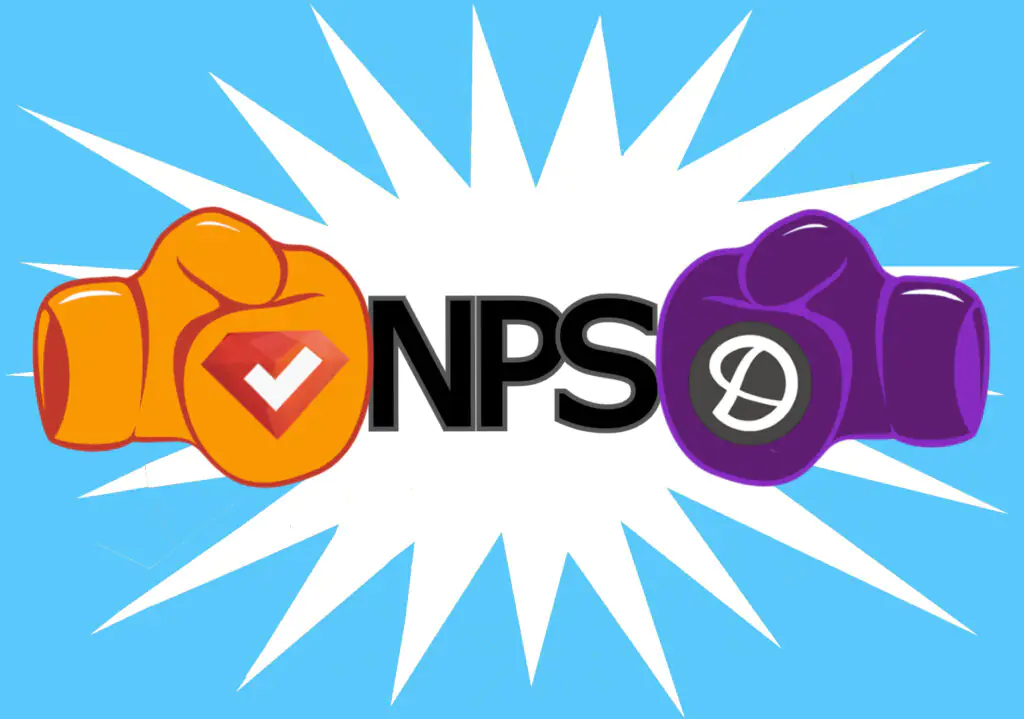“The Customer is King!” While it may not be a new saying, today it’s more important than ever. Nowadays, consumers have more options than ever before. That means, if your brand or product isn’t making them feel valued, they’ll find one that will. This is why marketers have come to rely on NPS, or Net Promoter Score, to gauge how well they are doing with the public. In this blog, we’ll cover everything you need to know about NPS and NPS surveys to make the most of them.
Net Promoter Score Definition
So what is a Net Promoter Score (NPS)? It’s a metric used in customer experience programs. To understand NPS, company’s use surveys to ask customers a series of questions about their experience with a brand, product, or service. Respondents choose their level of satisfaction (or another metric) on a scale of one to ten. The resulting data helps companies improve the customer experience, fix any problem areas, monitor loyalty trends, and grow revenue through referrals and upsells.
NPS Categories
When it comes to NPS surveys, respondents are placed into one of three categories based on their answers: Promoters, Passives, and Detractors.
Promoters (score of 9 and 10) are the most enthusiastic and satisfied customers. Aside from being loyal, many are also considered brand advocates, actively promoting your brand at no cost to you by talking it up to others in person or on social media.
Passives (score of 7 and 8) are generally satisfied, but they don’t go out of their way to promote your product or service. Even if they have a bad experience, they likely don’t talk poorly about the company to others. Because they have little impact on your reputation, good or bad, they are dropped from the NPS calculation.
Detractors (score of 0 to 6) do not like your brand. They may have had a bad experience, heard bad things, not like the company mission, or simply don’t like your offerings. While some may remain quiet, many are likely to actively dissuade others from doing business with your company, damaging your sales and possibly your reputation.
Importance of Knowing Your NPS
The Net Promoter Score helps companies gauge the quality of their product or service, or the overall impression of their brand. It’s important to know your NPS so you can begin to improve it (and let’s face it, there’s always room for improvement).
Armed with the knowledge of your NPS, begin working on ways to push passives into the promoter category (they’re almost there—a couple small improvements could push them into that category) and move detractors into the passive category (it’ll be difficult to turn these people into promoters, but you can at least do enough to get them to stop actively badmouthing your business).
Using NPS, companies can track and quantify their score over time, creating internal benchmarks. This creates goals that employees can rally around, especially if bonuses are provided when the desired NPS is achieved.
How NPS is Calculated
NPS is not difficult to calculate. Scores range from -100 to 100. To arrive at your NPS, you simply subtract the percentage of detractors from the percentage of promoters (remember, passives are not included in the equation).
If your score is negative if you have more detractors than promoters, and positive if the opposite is true. Now, don’t fret if your score is near zero; any score above zero is considered “good” because it shows that you have more promoters than detractors. It’s when your NPS is in the negative numbers that things are looking bad, because this means you have more detractors than promoters.
NPS Formula with NPS Example
Here’s a quick example of an NPS calculation. Let’s say 30% of respondents are detractors and 40% are promoters (another 30% are passives, but again, they aren’t included).
Your NPS formula would be 40-30=10. Not too shabby!

Ready to get started? Use our free NPS template!
NPS Scores of Major Brands
How do you think some of today’s top brands measure up when it comes to NPS? We took a look at the NPS of several Fortune 500 companies, and some were very surprising (Pepsi beat Coke!).
- Starbucks NPS: 77
- Apple NPS: 47
- Nike NPS: 30
- Amazon NPS: 7
- Pepsi NPS: 2
- Coca-Cola NPS: 0
- Walmart NPS: -4
- McDonald’s NPS: -8
This just goes to show you that, while striving for an NPS of 100 is admirable, it’s almost unheard of (it would mean 100% of your customers are promoters). Remember, scores above zero are considered good. Of course, a couple brands here have negative numbers. So, this also highlights the fact that brands can be successful even if their NPS is lacking (but they certainly should keep an eye on this and strive to do better).
Types of NPS Questions
NPS survey questions are quantitative, so they require a numeric response. The most common NPS example is as follows:
On a scale of 0 to 10, how likely are you to recommend our company to a friend, family member, or colleague?
Sometimes, you may want to ask NPS questions throughout the buyer journey. For example, when someone is making an online purchase. They interact with your website, wait for delivery, and then receive the product. Asking at each of these steps how the experience is going gives you a better understanding of what went right and what went wrong, versus one number for the overall experience.
For example, someone may have thought the website was confusing, and scored that experience a 4. They may have thought the delivery was too slow, and scored that a six. But once they received the product, they may have loved it, and scored that ten. By asking NPS questions throughout the journey, you can gain a better understanding of where you need to make improvements. In this case, the website and shipping time needs to be improved, but the product is perfect.
Follow-Up NPS Survey Questions
It’s important to push consumers for more information to give yourself better insight. This can be accomplished through follow-up questions. If this is an online or kiosk survey, you can use survey logic to ask follow-up questions based on the number value of their answer to the main question.
Check out the survey below, created using SurveyLegend and using survey logic. This survey is live, so give it a try. You’ll see that depending if you respond as a detractor (0-6), a passive (7-8), or a promoter (9-10), the follow-up question changes. This is great for engagement!
Read more about NPS Questions You Should Ask.
Managing Your NPS Data
Once you know your NPS score, you’ll want to continuously monitor it to make sure you maintain a good one or improve upon a bad one. This means letting promoters know you appreciate their loyalty (maybe even sending them a coupon code as a thank you to push them toward brand advocacy), asking passives how you can do better in the future in order to turn them into promoters, and ensuring detractors that you’ll resolve their issues and do better in the future.
While detractors may never become promoters, addressing their concerns in a timely manner may dissuade them from actively speaking negatively about your brand or company.
How to Improve Your NPS
Not impressed with your NPS or just looking to take it to the next level? Here are a few ways to up your NPS game!
- Get company commitment. Make sure everyone in the organization understands NPS and your NPS goals. Emphasize its importance and consider bonuses when employees meet certain NPS goals.
- Be aware of survey fatigue. With so many companies asking for feedback, people can develop survey fatigue. Be sure you aren’t overwhelming your customers by following these tips to avoid survey burnout.
- Customize and engage. Use customization, such as the customer’s name or the item they purchased, in subject lines so they quickly understand you know who they are. “Sara, are you enjoying your new purse?” will certainly get more attention than “Let us know about your recent purchase.”
- Know your industry’s benchmark. When determining what NPS is ideal, it helps to know how the industry as a whole is doing. For example, department stores tend to do best, with an average NPS of 58, while internet providers score lowest, with an average NPS of just 2. So, if you have a 40 but the industry as a whole has a 10, you’re in pretty good shape (but never rest on laurels!).
- Notify customers of your NPS survey. Studies show that pre-notifying customers can improve response rates by up to nearly 30%. So, have salespeople tell customers to be on the lookout for a customer experience survey. They’ll be more likely to respond!
- Send NPS surveys in a timely manner. To truly gauge a customer’s experience, it helps to survey them as soon as possible following the purchase. That’s when their memory of the experience will be best. Schedule surveys to go out shortly after purchase, or use a kiosk survey to get their feedback at the point of purchase.
- Use responsive survey design. Nearly 55% of web traffic comes from mobile users, so be sure your survey is responsive on any device, adjust for desktop, tablets, and mobile.
- Always be monitoring. Just because you had a great score on your initial NPS survey, doesn’t mean it will stay that way. To be sure you’re not losing promoters or gaining detractors, you need to continuously monitor your NPS. If your score is dropping, find out what is going wrong. If it’s rising, give the team a high five and keep it up!
- Respond to all NPS surveys: The good, the bad, and the ugly. People like to know that their voices are being heard. If they took the time to take your survey, take the time to respond back. Let satisfied customers know that you appreciate their response, let passives know you’ll continue to do better, and let detractors know you’ll work to resolve their issues.
- Leverage promoters. Positive word-of-mouth marketing drives $6 trillion of annual consumer spending, and your promoters are the ones helping you along. Imagine how much more good these promoters could be doing for your brand if they had an incentive to promote you? With an affiliate program, promoters market your product or service for financial rewards when a referral becomes a customer. Learn more about affiliate programs.
For a more in-depth look at these ideas and more, read 15 NPS Survey Best Practices You Need to Know. For more on improving your NPS score, check out How to Improve NPS in 8 Easy Steps.
Conclusion
What better way to conclude this blog than with words of wisdom from people that get the importance of NPS.
“It’s not the score that matters, it’s what you do with it to make promoters that really count.”
– Fred Reichheld
“If you build a great experience, customers will tell each other about that. Word of mouth is very powerful.”
– Jeff Bezos
“It takes 20 years to build a reputation and five minutes to ruin it. If you think about that, you’ll do things differently.”
– Warren Buffet
“Sending out NPS surveys is one of the best things a SaaS company can do to improve metrics across the board.”
– Neil Patel
All this said, knowing your NPS is critical. It helps you understand what you’re doing right and what you can do better, and what you’re doing wrong and how you can fix that. It also helps you understand your customers so that you can keep promoters, persuade passives, and pacify detractors. And while calculating NPS isn’t difficult, SurveyLegend makes it easier.
SurveyLegend automatically calculates NPS for you. Just log in to your account to see your score, and watch it change as more survey data comes rolling in. Visualizing your NPS data empowers you to begin making business decisions that can improve your score – or if you’ve got a great score, continue to maintain it. Learn more about NPS calculations and how SurveyLegend helps in our blog How to Calculate NPS (+ NPS Examples). Otherwise, start now with our beautiful, secure, and NPS-friendly surveys!
Frequently Asked Questions (FAQs)
NPS stands for Net Promoter Score. It was created by Fred Reichheld, a partner at Bain & Company, in 2003. He developed the NPS as a way of measuring how well an organization treats customers and whether it generates customer loyalty.
The NPS formula is Total Promoter Score – Total Detractor Score = NPS. Passives are not part of the NPS computation.
An NPS of 0 is good. An NPS above 20 is great and an NPS of 50 or above is excellent. At 80, an NPS is “world-class.” The best NPS is of course 100, although that is extremely difficult to achieve as it would mean that every customer is a promoter of a particular company or brand.




